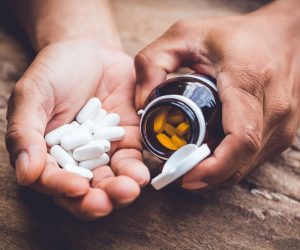Can You Tell Fake Xanax from the Real Thing?

The Dangers of Fake Xanax
Like many drugs that have legitimate medical uses, Xanax can be extremely dangerous when abused. Unfortunately, the abuse of Xanax has reached record levels over the years, impacting individuals and families from all walks of life. The prevalence of fake Xanax is among the many dangers that make abusing Xanax and other benzodiazepines so risky.
While the real Xanax has plenty of risks associated with it, fake Xanax is potentially deadly depending on the ingredients that were used to manufacture it. You may think that distinguishing fake Xanax from the real thing would be a simple matter. Unfortunately, that is not the case.
The truth is, telling a legitimate Xanax tablet from a potentially deadly fake Xanax pill is nearly impossible. Unless you have access to a sophisticated chemistry lab, you could easily mistake a fake Xanax tablet for the real thing and that could land you in the hospital. You cannot rely on your eyes, your nose, or any of your other senses to tell fake Xanax from real Xanax, and that makes getting help for Xanax addiction more critical than ever.
What Is Xanax?
Xanax is a benzodiazepine, a class of prescription medications often used to treat anxiety and other common mood disorders. Like other prescription drugs, Xanax can be highly addictive, especially when abused.
It should be noted that Xanax is physically and psychologically addictive and that physical addiction can create real problems for addicts and the people who care about them. When abused, Xanax and other benzodiazepines can create true life-threatening conditions. That’s why it’s so important to seek help if you are struggling with Xanax or worried about someone you love abusing it. Xanax is a drug that causes physical dependence, meaning that stopping it without professional medical supervision can trigger severe, even life-threatening, withdrawal symptoms.
If you or a loved one are struggling with addiction, call WhiteSands Alcohol and Drug Rehab today at 877.969.1993 to learn how we can help.
The Prevalence of Fake Xanax
The use of Xanax is big business, and not just for legitimate pharmaceutical companies, but on the black market as well. Back-alley labs have sprung up to mix unknown ingredients and churn out mountains of pills that look very real but are actually dangerous imitations.
Unfortunately for addicts and their families, it is almost impossible to distinguish fake Xanax from the real thing, creating a life-threatening situation for the user. The labs that make fake Xanax keep getting better at imitating the pills made by legitimate pharmaceutical companies, copying everything from the tablet’s exact color and size to the stamps on them.
The simple truth is there is no way to tell fake Xanax from the real tablet, and ingesting an unknown pill could be deadly. That means you should not take the chance; you do not want to gamble with your life.
Treatment for Xanax Addiction
Treatment for a Xanax addiction should always include a period of medically managed and supervised detox. Xanax addiction can involve severe withdrawal symptoms, including:
- headaches
- blurred vision
- muscle pain
- sensitivity to light and sound
- worsening of anxiety
- tremors
- diarrhea
- numbness in extremities
- loss of appetite
- insomnia
- heart palpitations
- sweating
- panic
- paranoia
- seizures
Unfortunately, many people who suffer from a Xanax dependency try to stop using on their own, and that can create a life-threatening situation for them and heartbreak for their families.
The good news is that medical detox from benzodiazepines like Xanax can keep you safe and comfortable as you taper your dose down at a safe and gentle pace. Medical detox includes round the clock monitoring by specially trained medical professionals. You can expect caring doctors and nurses at a medical detox facility to keep you safe and comfortable. Your vital signs will be checked regularly to ensure you’re not experiencing the most dangerous withdrawal symptoms, and fluids and medications will be prescribed as needed to ensure you are comfortable. Your dosage of Xanax will be tapered down as a safer alternative to going cold turkey.
After detox, the deeper work of rehabilitation can begin. This process is where the underlying mental and emotional causes of addiction can be addressed and healed. Since Xanax is a prescription designed to treat anxiety, its abuse is often accompanied by mental health disorders like bipolar disorder, anxiety, PTSD, and depression. These co-existing conditions require treatment to address the root causes of addiction and allow for lasting change to occur. Seeking treatment at an addiction treatment center that specializes in dual-diagnosis treatment is especially important for those who use Xanax as a way to cope with anxiety or another mental health condition.
If you are ready to seek help with your Xanax addiction or are looking for assistance for a friend or loved one, we invite you to reach out to us today. At WhiteSands, we’re experts at treating all kinds of addiction, including ones that are caused by an underlying mental health issue like anxiety. We offer dual diagnosis treatment and a range of levels of care to address the specific issues you or a loved one has been struggling with. It all starts with one simple phone call, so pick up the phone and contact us today.
If you or a loved one needs help with abuse and/or treatment, please call the WhiteSands Treatment at (877) 855-3470. Our addiction specialists can assess your recovery needs and help you get the addiction treatment that provides the best chance for your long-term recovery.
